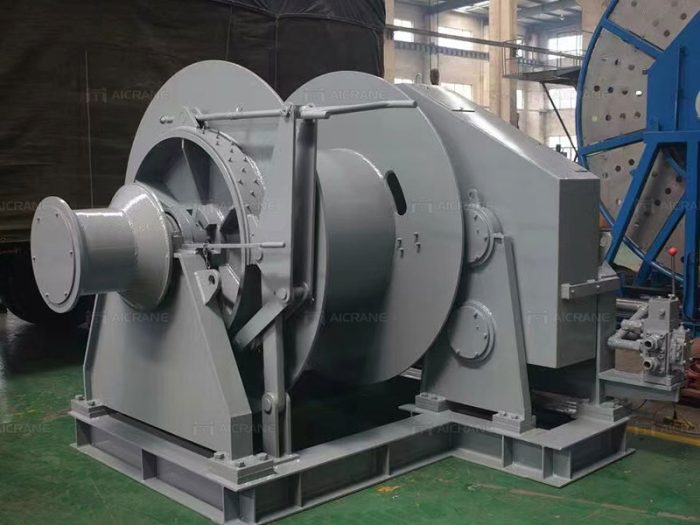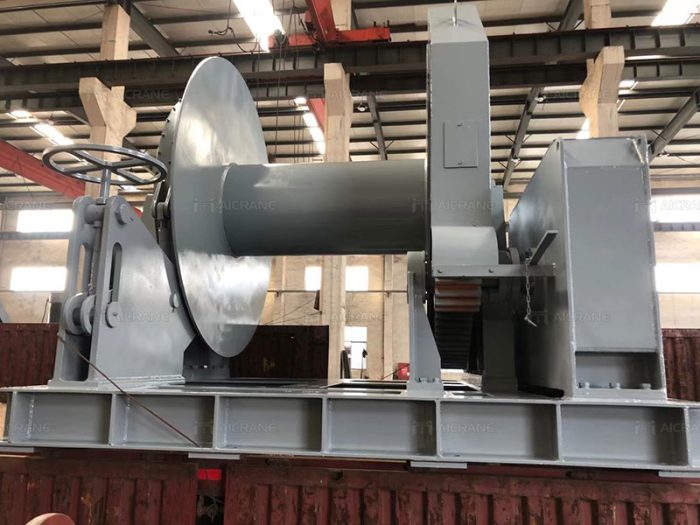Tugger winches play a pivotal role in various industries where the movement of heavy loads is a routine necessity. From construction sites to manufacturing facilities and maritime operations, these powerful devices simplify the task of transporting hefty materials over short distances. To ensure operational efficiency and safety, different control methods have been developed to manage tugger winches effectively. In this article, we delve into the world of tugger winch control methods, exploring their types, benefits, and applications.
Understanding Tugger Winches
Before delving into the control methods, let’s first comprehend what tugger winches are and how they function. A tug winch is a mechanical device designed to pull or hoist heavy loads horizontally over relatively short distances. It consists of a winch drum or spool that winds or unwinds a cable or rope, generating the required force to move the load. Tugger winches find applications in a range of industries, including construction, manufacturing, warehousing, and even marine operations for tasks such as ship mooring.

Types of Tugger Winch Control Methods
Several control methods have been developed to manage tugger winches efficiently. These methods enhance the precision, safety, and overall functionality of these devices. Here are some prominent types of tugger winch control methods:
1. Manual Control:
Traditional manual control involves an operator manually manipulating levers, switches, or buttons to control the winch’s operation. This method is simple and straightforward, making it suitable for small-scale operations where load movement doesn’t require intricate coordination. While manual control is cost-effective, it can be labor-intensive and potentially less precise than automated methods.
2. Remote Control:
Remote control methods allow operators to control the winch from a distance. This is particularly beneficial in hazardous environments or situations where physical proximity to the winch is not safe. Remote control can be achieved using handheld devices, such as radio remote controllers, that transmit signals to the winch’s control system. This method improves operator safety by reducing their exposure to potential risks.
3. Automated Control:
Automated control methods involve the use of sensors, algorithms, and programmable logic controllers (PLCs) to manage the winch’s operation. These systems can be programmed to perform precise movements and follow predefined paths, optimizing load transport efficiency. Automated control is highly beneficial in scenarios requiring repetitive tasks, increased accuracy, and reduced human intervention.
4. Computer Numerical Control (CNC):
CNC control methods integrate computer systems to precisely control the winch’s movements. These systems use complex algorithms and software to regulate the winch’s operation based on input data. CNC-controlled tugger winches are capable of executing intricate maneuvers with a high degree of accuracy, making them suitable for tasks that demand precise load positioning.
5. Wireless Control Systems:
Wireless control methods leverage modern communication technologies to control tugger winches. These systems often incorporate Wi-Fi, Bluetooth, or other wireless protocols to establish a connection between the operator’s device and the winch’s control interface. Wireless control enhances flexibility and mobility, allowing operators to control the towing winch from various locations within a designated range.

Benefits of Effective Tugger Winch Control
Implementing efficient tugger winch control methods offers a range of benefits that contribute to operational excellence and workplace safety. Some notable advantages include:
1. Enhanced Efficiency:
Effective control methods optimize the winch’s movements, resulting in smoother load transportation and reduced operational time. Automated and CNC control, in particular, enable precise load positioning, minimizing the need for manual adjustments and repositioning.
2. Improved Safety:
Modern control methods, such as remote and automated control, increase operator safety by reducing their exposure to potentially hazardous environments. Operators can control the winch from a safe distance, minimizing the risk of accidents.
3. Accurate Load Placement:
Control methods like CNC and automated systems ensure accurate load placement, which is crucial in industries where precise positioning is essential, such as construction and manufacturing. This accuracy reduces the likelihood of damage to both the load and the surrounding environment.
4. Reduced Operator Fatigue:
Automated and remote control methods alleviate operator fatigue by minimizing the physical effort required to operate the winch. This is especially beneficial in tasks that involve repetitive or prolonged operation.
5. Minimized Downtime:
Efficient control methods decrease downtime by streamlining operations and reducing the need for manual adjustments or troubleshooting. This leads to increased overall productivity and improved project timelines.
Applications of Tugger Winch Control Methods
Tugger winch control methods find application in a wide range of industries and sectors:
1. Construction:
In construction sites, tugger winches are used to move heavy materials such as concrete blocks, steel beams, and construction machinery. Efficient control methods ensure precise placement of these materials, contributing to the safety and progress of construction projects.
2. Manufacturing:
In manufacturing facilities, tugger winches assist in moving raw materials, components, and finished products along assembly lines. Effective control methods optimize production processes and reduce the risk of damage to valuable items.
3. Warehousing and Logistics:
Tugger winches are employed in warehouses and distribution centers to facilitate the movement of pallets, containers, and other goods. Accurate control methods enhance inventory management and order fulfillment processes.
4. Marine Operations:
Tugger winches play a crucial role in maritime operations, aiding in activities such as ship mooring, cargo handling, and offshore drilling operations. Control methods of marine winches like remote and automated systems enhance the safety and efficiency of these tasks.
5. Agriculture:
In agriculture, tugger winches assist in tasks such as pulling heavy equipment, transporting harvested crops, and managing irrigation systems. Efficient control methods contribute to improved farm operations and reduced labor requirements.
Conclusion
Tugger winch control methods have evolved over time to meet the diverse needs of various industries. From manual control to advanced automated systems, these methods enhance efficiency, accuracy, and safety in load transportation and positioning tasks. By understanding the different control methods available and their applications, industries can choose the most suitable approach to optimize their operations, reduce risks, and improve overall productivity.
